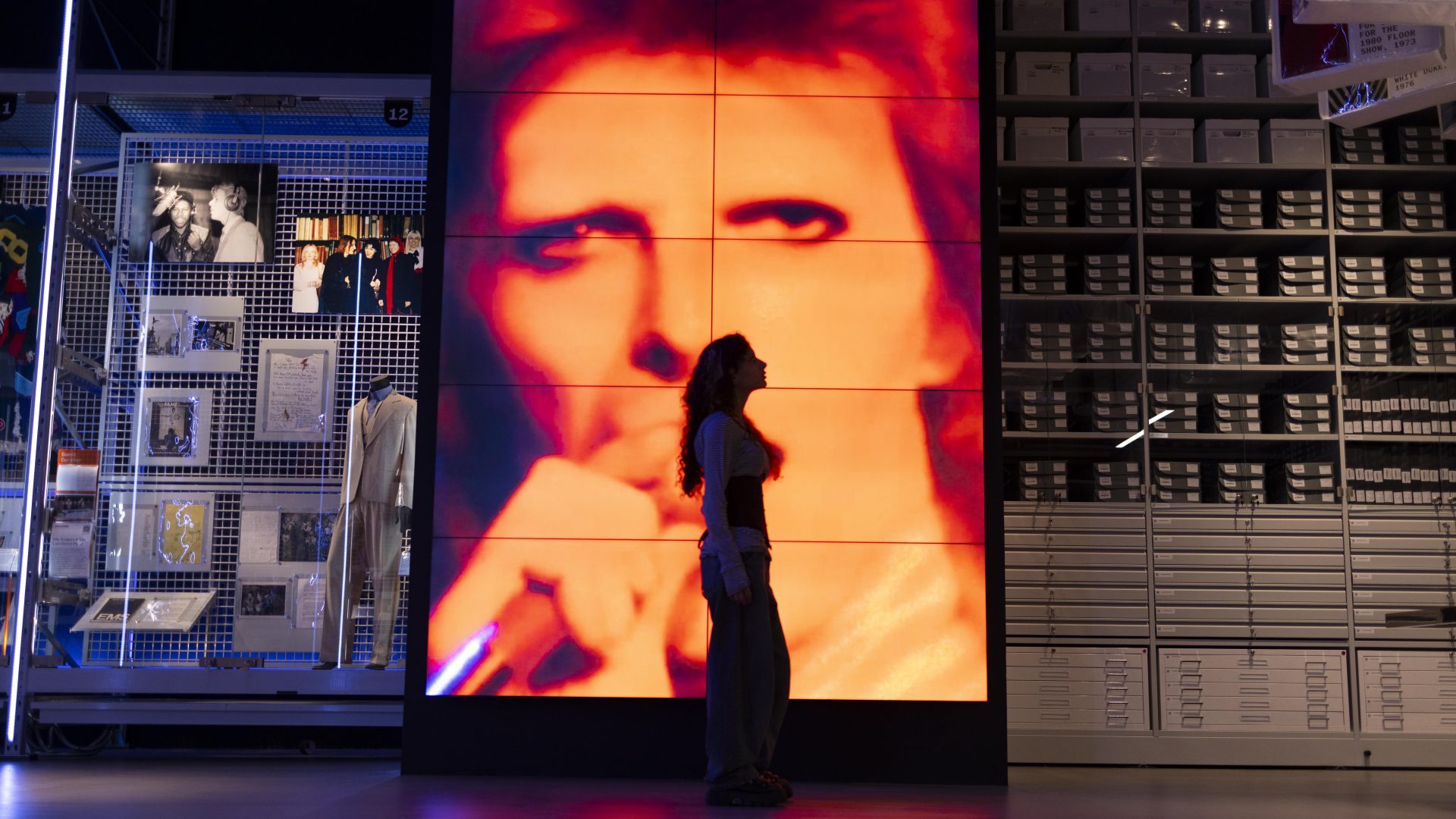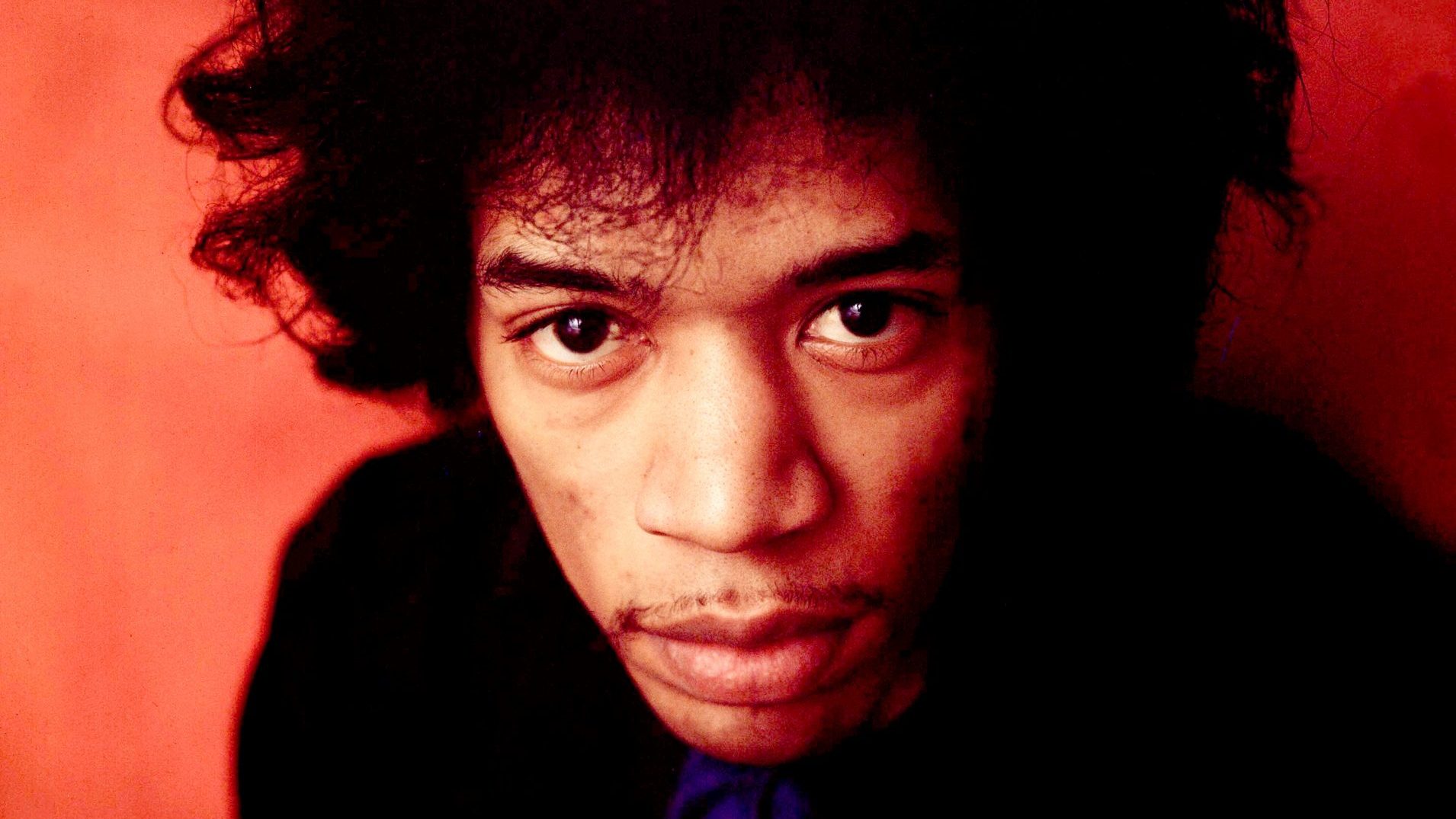PICK OF THE WEEK
David Bowie Centre (V&A East, Queen Elizabeth Olympic Park, London)
Even in death, David Bowie is still a shapeshifter: Major Tom, Ziggy Stardust, the Thin White Duke – and now the Great Curator. Thanks to the epic work of the team at the V&A Storehouse, the museum’s state-of-the-art facility that opened in May, the late superstar’s 90,000-item archive, including 414 costumes and accessories, almost 150 instruments, 187 awards, and thousands of photographs, documents and artistic images, will now be open to the public.
A permanent exhibition space, dominated by a floor-to-ceiling video screen, will showcase nine themed cabinets, three of them rotating every six months. Visitors can see the letter from Apple Records, dated July 15, 1968, in which A&R executive Peter Asher tells the singer’s manager: “As we told you on the phone, Apple Records is not interested in signing David Bowie. The reason is that we don’t feel he is what we’re looking for at the moment.”
There is an undated note from Lady Gaga thanking Bowie for sending him an early copy of his latest album (“How does he know I exist?”) and a framed image of Little Richard.
There is the Stylophone that Bowie played on Space Oddity (1969), and a poignant tribute carved in wood, apparently sent after his death from the Carinda hotel where he filmed the 1983 Let’s Dance video (“Farewell David! From the Carinda Pub and its Serious Moonlight”). Overhead, costumes immaculately stored in Tyvek bags hang from a clothes rail.
More intriguingly, there are notes and drawings related to projects that were never completed; the jottings and musings of a perpetually dreaming genius. A board of Post-it Notes, written in 2015 (the year before his death), plots out a musical titled The Spectator, set in 18th-century London.
Four decades before, he had sketched out film versions of Diamond Dogs (1974) and Young Americans (1975). In 1994, he and Brian Eno were planning an extravaganza to be staged in Mumbai, Leon in India. These are the exhibition’s tears in rain.
The heart of the centre, however, is the study space, where visitors can inspect up to five items ordered from the database, having made an appointment online (the service is free to the public). At the preview I attended, there was a beautiful Kansai Yamamoto top from the Ziggy era, a Harptone 12-string guitar from the seventies, a pair of platform shoes, a Freddie Burretti Aladdin Sane jacket.
This is where, paradoxical as always, the man whose persona was based upon the distance between rock icon and devout audience has turned his comprehensive archive into a carnival of intimacy and human connection. It melts the partition between custodian and visitor; between Starman and Earthling.
Notionally uninterested in the past, shedding skins as he sashayed through global culture, Bowie actually kept more or less everything – with a keen eye on posterity and the democratisation of access.
It is often remarked, correctly, that he was one of the first to fully grasp the transformative potential of the Internet (in his 1999 interview with Jeremy Paxman, he described it as an “alien life form”). But he also, it is now clear, intuited that, as digital media became more dominant, contact with physical artefacts – triggers of memory, inspiration of new ideas – would become even more important.
Though he died in 2016, aged 69, he fully intended to live on as a spectral citizen of the future whose creative contours he did so much to shape. This centre and the work that V&A have done to make it possible are simply extraordinary. Major Tom is gone – but look what interstellar treasures fell to Planet Earth.
BOOK
The Traitors Circle: The Rebels Against the Nazis and the Spy who Betrayed Them, by Jonathan Freedland (John Murray)
Three years after his remarkable book The Escape Artist: The Man Who Broke Out of Auschwitz to Warn the World, Jonathan Freedland returns to the history of the Nazi terror and the second world war with what, in my opinion, is a masterpiece.
At the heart of his story is a loose-knit resistance group and, in particular, a fateful tea party at Carmerstrasse 12 in west Berlin, on 10 September 1943. “All of the guests that afternoon,” he writes, “carried either a name, or a fortune, associated with Germany’s one-time elite.” One of them was also a mole – a Nazi informant, passing on intelligence to Leo Lange, an SS officer who had already played a crucial role in developing the horrific industrial methods that underpinned the Holocaust.
As Freedland writes, the members of this circle were not ideologically homogeneous: some were motivated by faith, others by a decent patriotism at odds with Hitler’s brutal version of loyalty to himself and to Germany. Some subscribed, at least at first, to what he calls “the timeless creed of the pragmatist”: better to influence the system from within than stand outside it and make no difference at all. The physical courage shown by some of the group was extraordinary – and the torments many of them faced in due course were symmetrically appalling.
Freedland – a bestselling thriller writer under the nom de plume Sam Bourne – tells the story with pace, vigour and an attention to detail that sometimes catches the breath. When the Silesian countess, Maria von Maltzan, hides her Jewish lover Hans Hirschel in a sofa bed, she leaves codeine and a glass of water inside so that his cough will not give him away. When the Nazi interrogators use sleep deprivation, they compound the torment by dosing prisoners with sleeping medication.
In addition to its great literary and historical value, The Traitors Circle is essential to the contemporary effort that is required to prevent what the group’s members feared after the war: “the great forgetting”. The author is quite right to say that “[s]ome [of the questions posed by the book] reverberate especially loudly at this moment”.
You can hear TNW founder and editor-in-chief Matt Kelly and I in conversation with Jonathan Freedland on the episode of The Two Matts posted on Tuesday September 16.
FILM
The Long Walk (General release)
Based on a novel that Stephen King wrote when was 19, and later published in 1979 under the pseudonym Richard Bachman, Francis Lawrence’s movie is one of the best adaptations of his work to date – worthy of provisional comparison with The Shining (1980) and The Shawshank Redemption (1994).
In a dystopian America, scarred by war and economic collapse, 50 boys selected by ballot from each state compete in a brutal walk over hundreds of miles, in which they must maintain a pace of three miles an hour, stay on the road and not fall behind. If they fail, they “get their ticket” – which is to say, they are summarily executed by soldiers.
Only one will survive to win a big cash prize and have a personal wish granted. In spite of this barbaric Darwinianism, a patchy solidarity emerges among the exhausted contestants – especially between Ray Garraty (Cooper Hoffman) and Pete McVries (David Jonsson). Both actors deliver performances worthy of Oscar nomination.
King’s original notion was to fictionalise the waste of youth in the Vietnam War. In 2025, there are other resonances – not least with the accelerating sadism of reality television and with the ever greater expectations loaded upon the shoulders of the young in a world of diminishing opportunity. As the presiding Major (Mark Hamill) growls monstrously about the “epidemic of laziness”, the viewer is reminded of the contemporary populist urge to blame economic hardship upon its victims.
Though Lawrence has directed four Hunger Games movies, with another in the works, The Long Walk owes less to that franchise than to They Shoot Horses, Don’t They? (1969), Sydney Pollack’s classic portrayal of a Depression-era dance marathon, and Rollerball (1975), in which a team bloodsport is designed to enforce social conformity by dramatising the futility of individual heroism. A gruelling, compelling work of cinema.
BOOK
Clown Town, by Mick Herron (Baskerville)
The ninth book set in the world of Slough House – home to MI5’s losers, outcasts and failures – is one of the very best in Mick Herron’s tremendous espionage series. At the helm of this luckless gang of spooks, as ever, is the astonishingly anti-social Jackson Lamb, “like a sleeping bag stuffed with potatoes”, who calls his team member River Cartwright (recovering from a brush with death) “Uh-Oh Seven”.
Loosely based on the real-life case of Freddie Scappaticci, the senior IRA officer recruited by the British army as agent “Stakeknife”, Clown Town has as its McGuffin a book in the library of River’s late grandfather, David, a legend of the service, which discloses a deadly secret involving a sleeper cell known as the “Brains Trust”.
There is a new prime minister, recognisably Keir Starmer (though unnamed), who spars with Diana Taverner, MI5’s scheming “First Desk”; and Peter Judd, the former Conservative home secretary (more than a little reminiscent of Herron’s contemporary at Balliol College, Oxford, Boris Johnson) is back and up to his old tricks. The pace, wit and characterisation are as fine as we have come to expect from our greatest spy fiction writer. Meanwhile, the fifth season of Apple TV’s excellent Slow Horses adaptation, starring Gary Oldman as Lamb, launches on September 24.
STREAMING
The Girlfriend (Prime Video)
Robin Wright, who did so much to make House of Cards (2013-18) a classic, is already in the prestige television hall of fame. In this six-episode adaptation of Michelle Frances’ best-selling 2017 novel, she plays Laura Sanderson, an art dealer, married to hotel tycoon Howard (Waleed Zuaiter) – and obsessively protective of her doctor son Daniel (Laurie Davidson).
Oedipus wrecks ahoy, as he brings home his new girlfriend, Cherry Laine (Olivia Cooke), to whom Laura takes an instant dislike. It is clear from the off that Cherry is lying about her background and has a decidedly cruel streak. But is Laura’s conduct any better?
The aesthetic of the series – three episodes of which Wright directed – is a cross between high camp and psychological thriller, and the fusion works a treat. As the dramatic perspective shifts from mother to girlfriend and back again, we are left wondering what is truly going on; a plot conceit that is enriched by the fine performances of the two warring principals.




